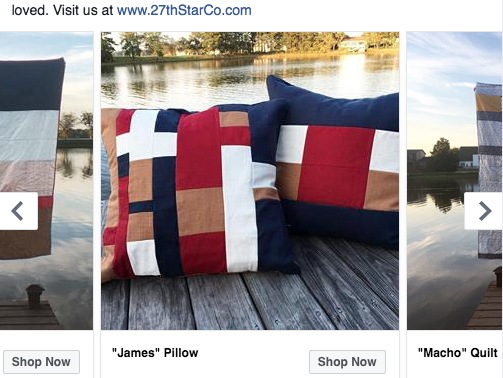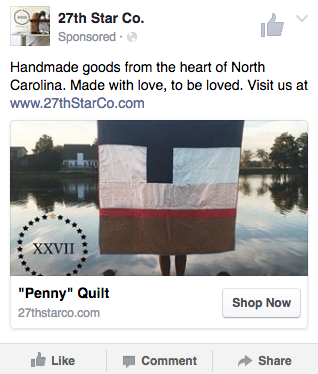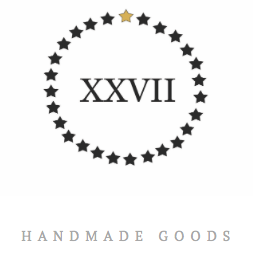
What is Klout?
Klout is a social media influence measurement system.
What Klout Does:
Klout is a service that gives everybody on social media a way to measure your social media influence. Klout is “a website and mobile app that uses social media analytics to rate its users according to online social influence via the ‘Klout Score’, which is a numerical value between 1 and 100. In determining the user score, Klout measures the size of a user’s social media network and correlates the content created to measure how other users interact with that content” (Parr 2011). It’s similar to the way that celebrities are given Q Scores.
Klout determines a user’s score based on activity and engagement on these social media channels: Facebook, Twitter, Instagram, Google+, Bing, LinkedIn, Foursquare, and Wikipedia

The History of Klout:
Klout founder Joe Fernandez got the idea for Klout in 2007, while recovering from jaw surgery where he couldn’t speak to anyone for months. He realized that social media could be used to influence people, and he liked that some people were more influential than others.
After spending months in Singapore with a coding team he’d hired, Fernandez was back in his hometown of New York City and had launched Klout via a single tweet on Christmas Eve 2008.
By 2009, headquarters were relocated to San Francisco, CA in order to be closer to the rest of the social media giants.
In 2011, users were able to connect their Facebook, foursquare and LinkedIn.
In 2012, Klout launched a feature that showcased user’s biggest moments on their profiles. Also in 2012, Microsoft invested in Klout, and eventually led to a partnership with Bing, making Klout scores part of search results.
In 2013, user’s got to showcase their biggest Instagram moments on their profiles.
In 2014, Klout was acquired by Lithium Technologies, and most of the “perks” programs were diminished from there along with the popularity of the company in general.
Klout’s Target Audience:
While anybody and everybody with at least one of the featured social media accounts can use Klout, only those who are truly interested, dare I say obsessed, with social media and the power of being considered “influential” are the core demographic. “Klout matters today for those who are influencers or those who want to be influential. This is particularly true for people like authors, professional speakers, actors, marketing professionals and other thought leaders” (Palermo 2013). This means Klout is great for brands to find influencers to promote and endorse their products. Those with a high Klout score often received freebies (aka Perks) from brands in exchange for posting them on social media.

Amount of Users On Klout:
Klout has scored over 620 million users and over 200,000 businesses have used Klout, as well (“About Klout”).
Klout’s Growth:
Klout went from being a tiny little Internet start-up to an Internet sensation in a matter of just a few years. After the initial excitement about the opportunity to tangibly rank your influence on the world, people come out in droves to see how they matched up. It didn’t hurt that it was free and linked to social media that people were already extremely active and familiar with. After receiving support from Microsoft (who hadn’t given money to another social startup since Facebook five years prior), Klout was on top of the world. The company quickly grew to about 70 employees and had hundreds of millions of users.
How Does Klout Work?
Klout determines a score on a scale of 1-100 using an algorithm (which they have kept quite mysterious) of many different signals, based on your social media engagement. To determine a score, Klout uses:
“more than 400 signals from eight different networks to update your Klout Score every day… The majority of the signals used to calculate the Klout Score are derived from combinations of attributes, such as the ratio of reactions you generate compared to the amount of content you share. For example, generating 100 retweets from 10 tweets will contribute more to your Score than generating 100 retweets from 1,000 tweets. We also consider factors such as how selective the people who interact with your content are. The more a person likes and retweets in a given day, the less each of those individual interactions contributes to another person’s Score. Additionally, we value the engagement you drive from unique individuals. One-hundred retweets from 100 different people contribute more to your Score than do 100 retweets from a single person” (“The Klout Score”).
Basically, Klout looks at your followers, how often you post, how often you and your “friends” respond to each other, likes, shares, re-posts, and much, much more.

photo: Klout
Social Media Channels Related to Klout:
As mentioned before, Klout determines users scores based off of their Facebook, Twitter, Instagram, Google+, Bing, LinkedIn, Foursquare, and Wikipedia accounts and/or contributions. Some major social channels that Klout is missing out on would be Snapchat, YouTube, Periscope, and Vine (when it was around and in it’s prime).

Is Klout Mobile Friendly?
Yes, there’s an app version of the site available for both iPhone and Android, as well as the desktop website is easily viewable on a mobile device.
Public Figures/Brands That Are Using Klout To Their Advantage:
Klout is not a social media meant to actually post much on, nor it is really even a social media that most share links to.
At it’s peak, Klout scores were considered by many employers as a qualification to get hired: low score, no job. Brands looked at candidate’s Klout scores either before or during an interview to determine whether or not they would hire, because their Klout score was an example of how influential and trustworthy they were.
One marketing professor at Florida State University even graded his students based on their Klout scores after he learned that may employers were looking at applicant’s scores before/during interviews (Popper 2012).
The Palms Casino Resort in Las Vegas even used guests’ Klout scores to, in turn, improve their own. “Clerks surreptitiously looked up guests’ Klout scores as they checked in. Some high scorers received instant room upgrades, sometimes without even being told why. According to Greg Cannon, the Palms’ former director of ecommerce, the initiative stirred up tremendous online buzz. He says that before its Klout experiment, the Palms had only the 17th-largest social-networking following among Las Vegas-based hotel-casinos. Afterward, it jumped up to third on Facebook and has one of the highest Klout scores among its peers” (Litsa 2016).
Many companies either parternered with Klout, like Virgin Airlines (and the others mentioned previously) did, or took it upon themselves to reward influencers with high scores some perks. “Virgin America has offered free flights, Capital One has dispensed bonus loyalty points, and Chevrolet has loaned out its new Sonic subcompact for long weekends” (Stevenson 2012). Klout was also used by websites such as Salesforce.com and Gilt Groupe to monitor the scores of their customers, giving perks or higher priority to those with higher Klout scores.
Some examples of public figure’s Klout scores would be:
Barack Obama: 99
Justin Bieber: 92
Oprah Winfrey: 90
Lebron James: 90
Anderson Cooper: 86
Kevin Hart: 84
And just for fun… Dr. Selepak: 46

A cartoon featured in The New Yorker
Criticisms of Klout:
One thing to know about Klout is that there is a lot of crisiticism surrounding the company. Complaints include easy fabrication and inflation of scores, social media influence vs. real life influence, and the stress involved with having another number attached to one’s name.
“Despite its growing business success, you would be hard pressed to find a more loathed startup. In the “criticism” section of its Wikipedia page the company is described as a “evil” form of “internet herpes” that preys on user’s social anxiety. There are clearly still a few kinks in the system” says Ben Popper of The Verge, “On Klout, where my score is 65, I’m cited as influential on the topics of Forbes, Branding, Boats and Manhattan. In reality I write for The Verge about technology, was born and raised in Brooklyn, and couldn’t tell the difference between a sloop and schooner to save my life” (Popper 2012). Another example of skepticism surrounding the Klout score involves an infamous situation where “Klout Scores indicated Justin Bieber was more influential than the Dalai Lama and the President of the United States” (Nathanson 2014).
Many people, including those at The Verge believe that they idea of being labeled with more numbers in too daunting, “When online influence becomes something that can be quantified, boiled down to a two digit number like a Klout score, it inevitably turns into a double-edged sword… Do we really want another number, along with our blood pressure and our credit score, that we need to worry about improving?” (Popper 2012). Those on Klout’s side will just argue that is the opinion of somebody with a low score. A company being labeled with a low score could damage their customers’ perceptions for a silly reason.
Another major criticism of Klout is the premise of the company in general. “Klout wanted to force accountability on the social world. That’s a legitimate premise. But in execution, Klout got everything backward. Its system created a selection pressure for frivolity at the expense of truth… The whole approach just doesn’t make sense. Klout’s existence defeats its purpose.” (Nathanson 2014).
Brands beware of these criticisms. These can go to show how Klout scores may not be the end-all be-all when it comes to finding spokespeople.
Overall…
Klout is great because for once, we all got to see just how far our voices can be heard, personally and professionally. It’s great for brands extremely active on social media and those looking to make a (personal branding) name for themselves via the Internet. Klout made it possible to give companies and regular people the chance to collaborate in a way they never had before, and it was a win-win situation for both parties.
For more information, check out my Prezi here.
SOURCES:
Klout, Inc. “About Klout.” Klout.com. N.p., n.d. Web. 13 Feb. 2017.
Klout, Inc. “The Klout Score.” Klout.com. N.p., n.d. Web. 13 Feb. 2017.
Litsa, Tereza. “Remembering Klout: how ‘influence’ has changed over the years.”
SearchEngineWatch.com. Search Engine Watch, 30 Mar. 2016. Web. 15 Feb. 2017.
Nathanson, Jon. “Klout Is Basically Dead, but It Finally Matters.” Slate.com. Slate
Magazine, 01 May 2014. Web. 15 Feb. 2017.
Palermo, Elizabeth. “How to Improve Your Klout Score and Why You Should
Bother.” Business News Daily. N.p., 21 Oct. 2013. Web. 15 Feb. 2017.
Parr, Ben. “Klout Now Measures Your Influence on Facebook.” Mashable.com.
Mashable, 13 Sept. 2011. Web. 13 Feb. 2017.
Popper, Ben. “Your Klout score must be greater than 35 to read this.” TheVerge.com.
The Verge, 08 Oct. 2012. Web. 15 Feb. 2017.
Stevenson, Seth. “What Your Klout Score Really Means.” Wired. Conde Nast, 24 Apr.
2012. Web. 15 Feb. 2017.
 photo: Snapchat
photo: Snapchat

























